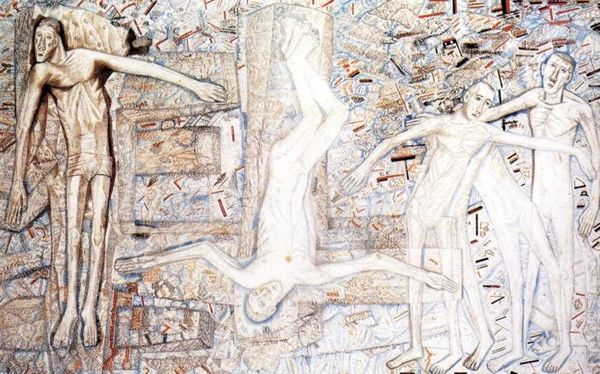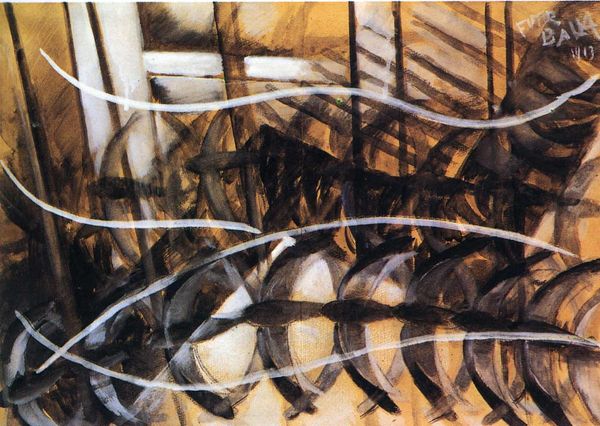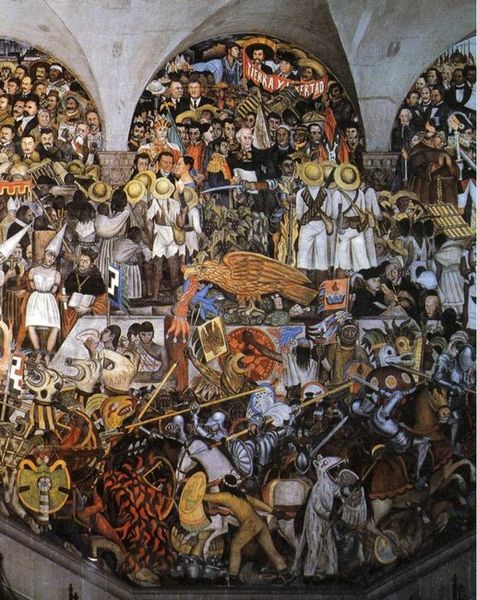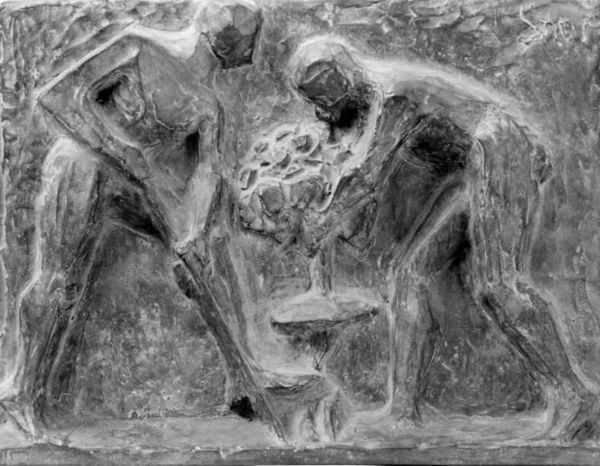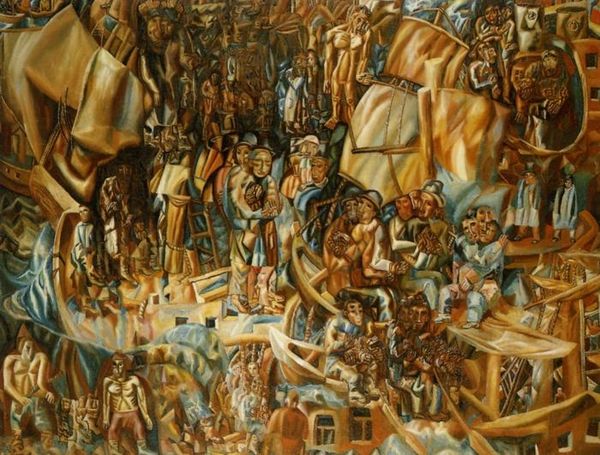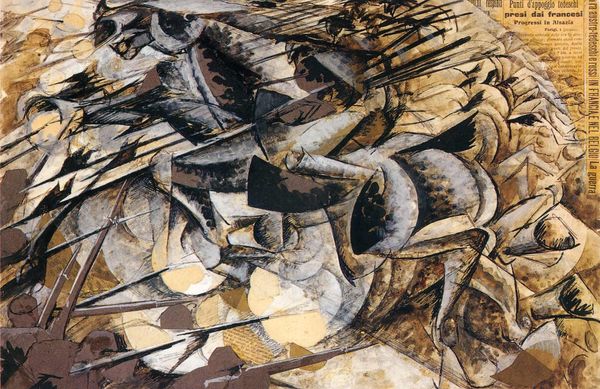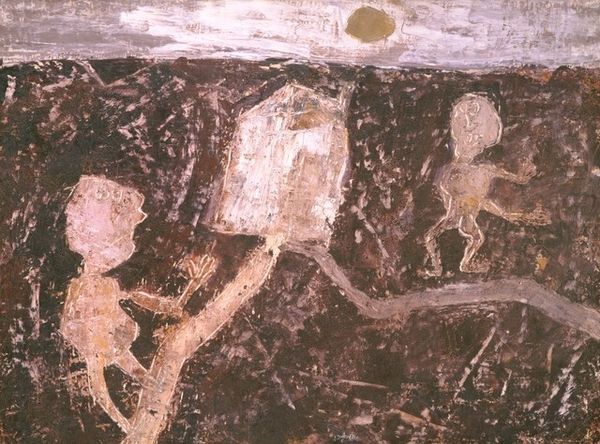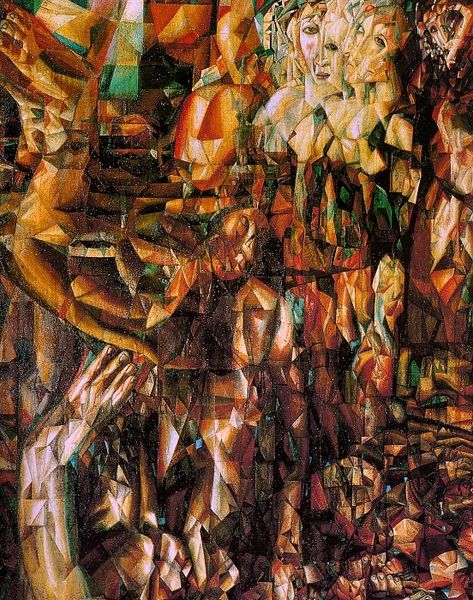
oil-paint
#
cubism
#
oil-paint
#
figuration
#
geometric
#
nude
#
modernism
Copyright: Public domain US
Editor: Here we have Fernand Léger's "Nudes in the Forest," an oil painting from 1910 currently housed at the Kröller-Müller Museum. It strikes me as... well, a bit like robots sunbathing. So, what do *you* make of this fractured Eden? Curator: Robots sunbathing! I love that. It does have that feeling, doesn’t it? All hard edges and gleaming surfaces. You know, Léger was deeply affected by machinery. He saw the beauty in the machine age, the potential for a new kind of human form born from it. He wasn't just painting nudes; he was reimagining them, updating them for a world being revolutionized by technology. Does the forest feel more… engineered than organic to you, too? Editor: Definitely! It’s not a soft, inviting space. The forms are so geometric and the color palette so limited, it feels almost industrial. Was he rejecting traditional representations of the nude figure? Curator: Rejecting is a strong word… perhaps… he was challenging them. Artists like Léger wanted to push back against centuries of idealized nudes. Instead of celebrating soft flesh and flowing lines, Léger embraces these blocky, almost architectural figures. Almost as if the new bodies of steel will slowly merge into what will also become the new hard and fractured nature. Do you find the lack of traditional sensuality off-putting? Or is there something compelling about it? Editor: I think it's interesting. It makes me think about how beauty standards change over time, and how even the human body can be reinterpreted through the lens of technology or societal change. It's less inviting, sure, but thought-provoking, for sure. Curator: Exactly! And I think, ultimately, that's what Léger wanted: to make us think, to question, to see the world anew. Isn't that a far more stimulating encounter than beauty as we already know it? Editor: Absolutely. I think I understand the robotic sunbathers a little better now!
Comments
No comments
Be the first to comment and join the conversation on the ultimate creative platform.

